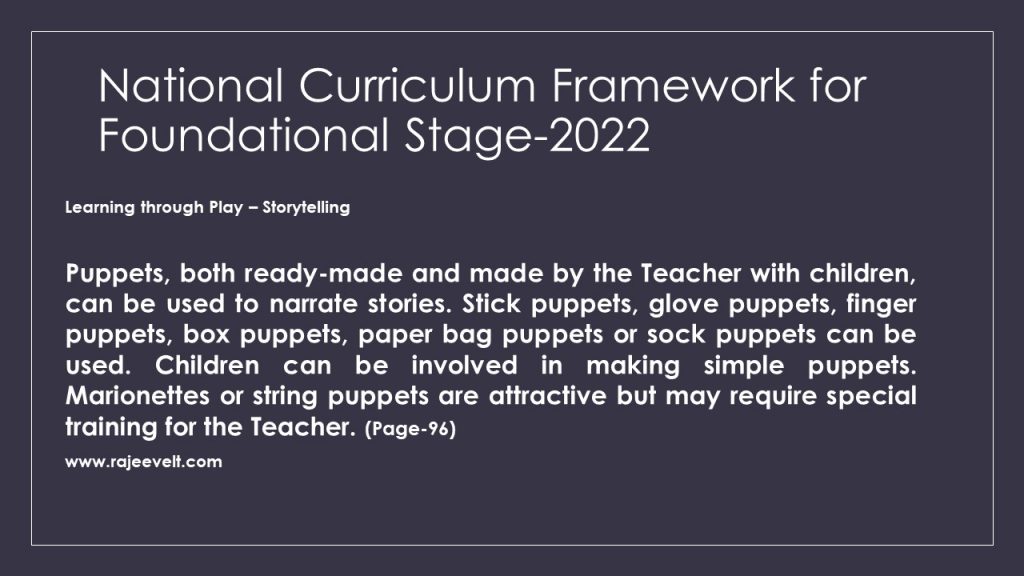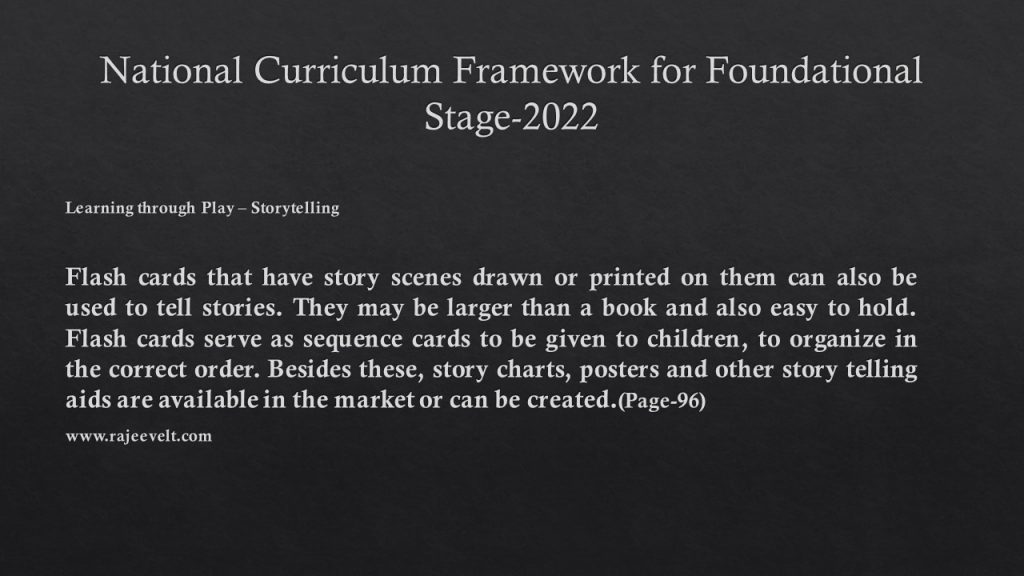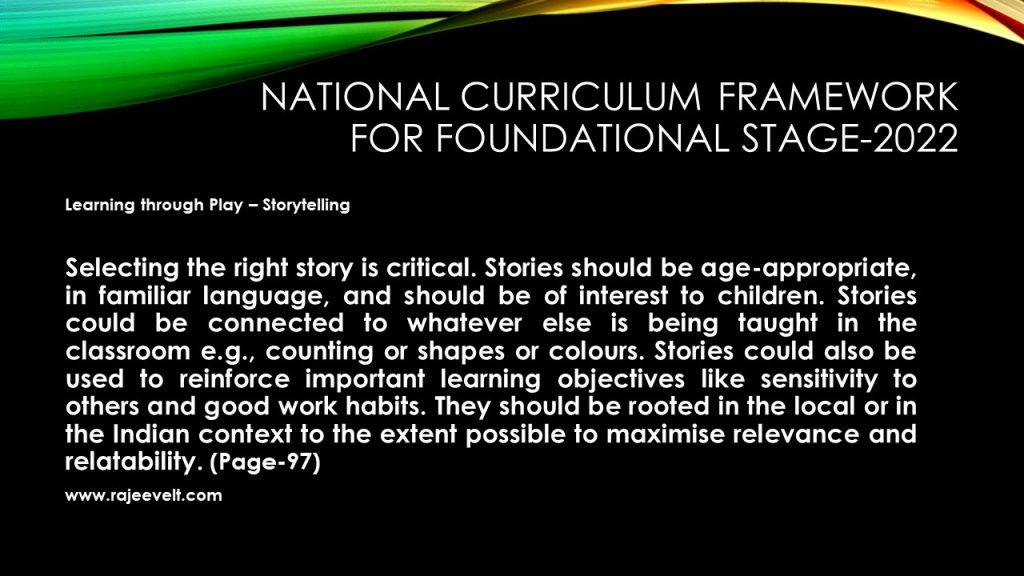
Stories are a window to the world for children. They are fascinating, beautiful, enchanting!! Listening to stories is great fun and young children, particularly, love to listen to them. Stories told with feeling, with gestures and animated expressions are magical and take your breath away. Every word becomes an experience in itself.
National Curriculum Framework for Foundational Stage-2022
Benefits of Storytelling at Early childhood Care and Education
- Stories are a particularly good medium for learning about social relationships, ethical choices, for understanding and experiencing emotions, and becoming aware of life skills. While listening to stories, children learn new words thus expanding their vocabulary, and learn sentence structure and problem-solving skills. Children with very short attention span concentrate for a longer time while engrossed in a story. Through culturally contextual stories, we can acquaint children with their culture, social norms and create awareness about their surroundings.
Useful Tips for the Teachers
- Young children like listening to the same story again and again. Over a period, they make better meaning of the content and also remember it when reinforced. Repeated listening of the same
- story in different forms helps them engage better with the characters, events, and ideas of the story, and of course, imagination, and vocabulary development.
- While narrating stories orally, the Teacher should know the story very well. Stories should be narrated with voice modulation and expressions. A well-told story can help children visualize and participate in the events that are unfolding through the story.

- Books should also be used to tell stories. A child need not know how to ‘read’ to enjoy books touching books, turning pages, looking at pictures, finger reading – this must be encouraged at all times
Picture Telling Story at Foundational Stage
- Pictures in books support content and retain the interest of children. When children observe their Teacher reading stories from books, they understand the importance of print and books,
- and value reading as a skill. Teachers can read stories aloud from books, pointing to the words with their finger, thus drawing children’s attention to the fact that each spoken word has a form.
- Reading aloud stories also helps children realize that formal written language is a little different from the spoken language. Books can be picture books, story books with or without pictures, or
- story books in multiple languages.
Storytelling through Puppets at Foundational Stage

- Puppets, both ready-made and made by the Teacher with children, can be used to narrate stories. Stick puppets, glove puppets, finger puppets, box puppets, paper bag puppets or sock puppets
- can be used. Children can be involved in making simple puppets. Marionettes or string puppets are attractive but may require special training for the Teacher.
Storytelling through Flash cards at Foundational Stage

- Flash cards that have story scenes drawn or printed on them can also be used to tell stories. They may be larger than a book and also easy to hold. Flash cards serve as sequence cards to be given
- to children, to organize in the correct order. Besides these, story charts, posters and other story telling aids are available in the market or can be created.
- Children and Teachers can dramatize stories, act, and speak the dialogues and thus experience the story. Children can be shown stories on television or laptops. They can also listen to audio
- tapes of stories.
Besides listening to stories, children must also have the opportunity to tell stories. Stories told by children can be the same ones they have heard or something they have created. The Teacher can begin to tell a story and ask children to complete it.

- Selecting the right story is critical. Stories should be age-appropriate, in familiar language, and should be of interest to children. Stories could be connected to whatever else is being taught in
- the classroom e.g., counting or shapes or colours. Stories could also be used to reinforce important learning objectives like sensitivity to others and good work habits. They should be rooted in
- the local or in the Indian context to the extent possible to maximise relevance and relatability.
- After telling a story, the Teacher could find out whether the children have understood the content of the story. The Teacher can ask questions of what, whom, why, where, how and what if. As
- children grow a little older, the Teacher can discuss why a character behaved in a certain way, what was the consequence, and talk about right and wrong actions. Another follow-up activity
- could be drawing. Children can draw a scene or characters in the story. Role play and dramatization can be other follow-up activities.
National Curriculum Framework for Foundational Stage-2022
https://ncert.nic.in/pdf/NCF_for_Foundational_Stage_20_October_2022.pdf


